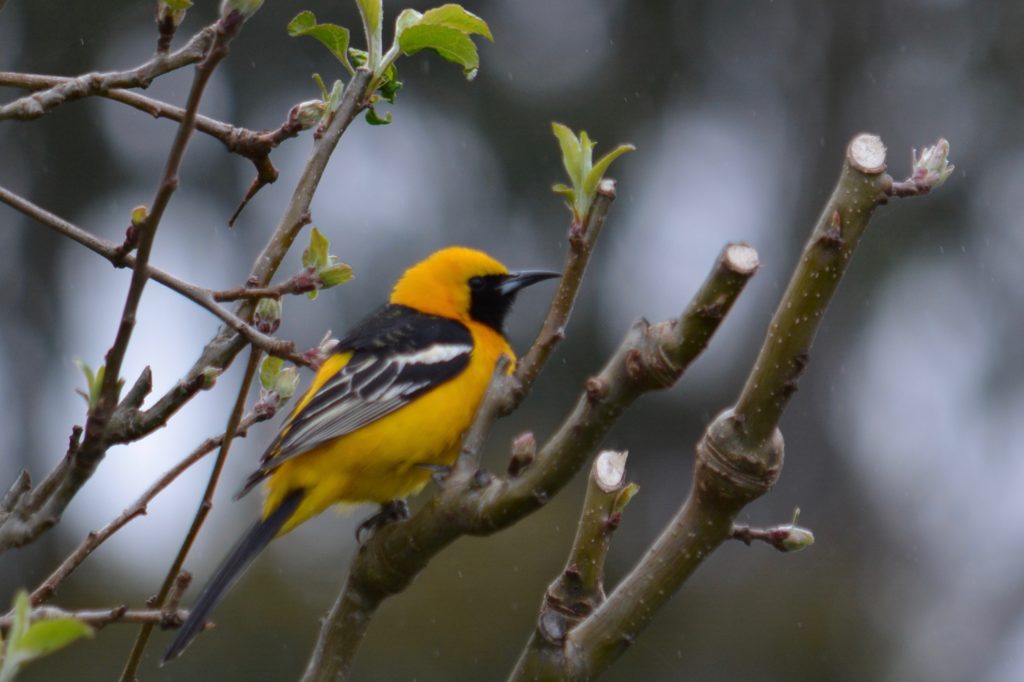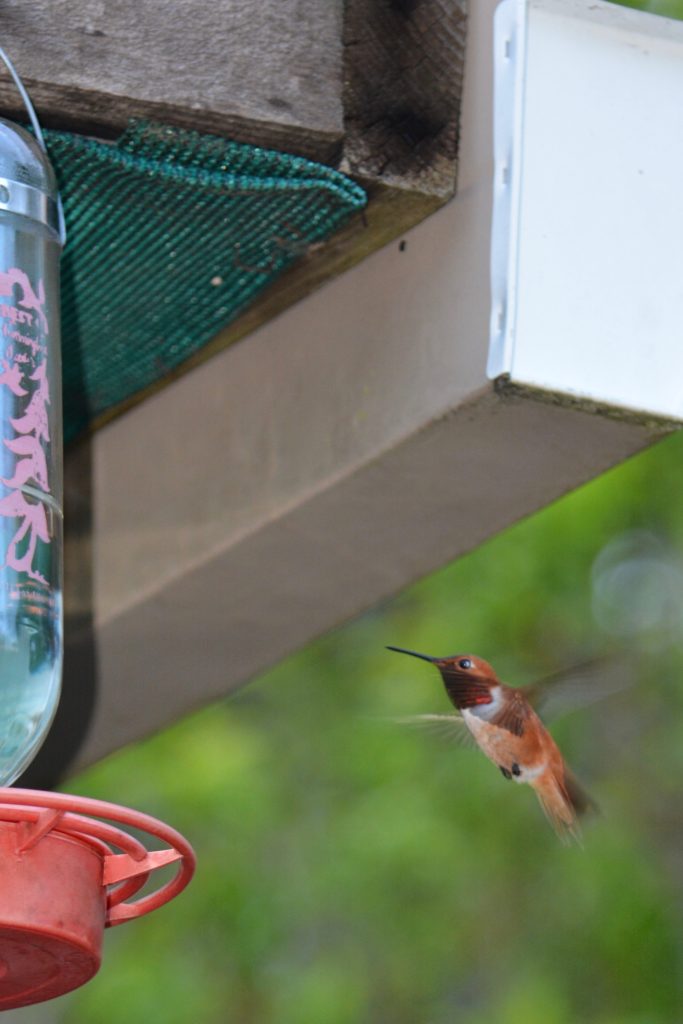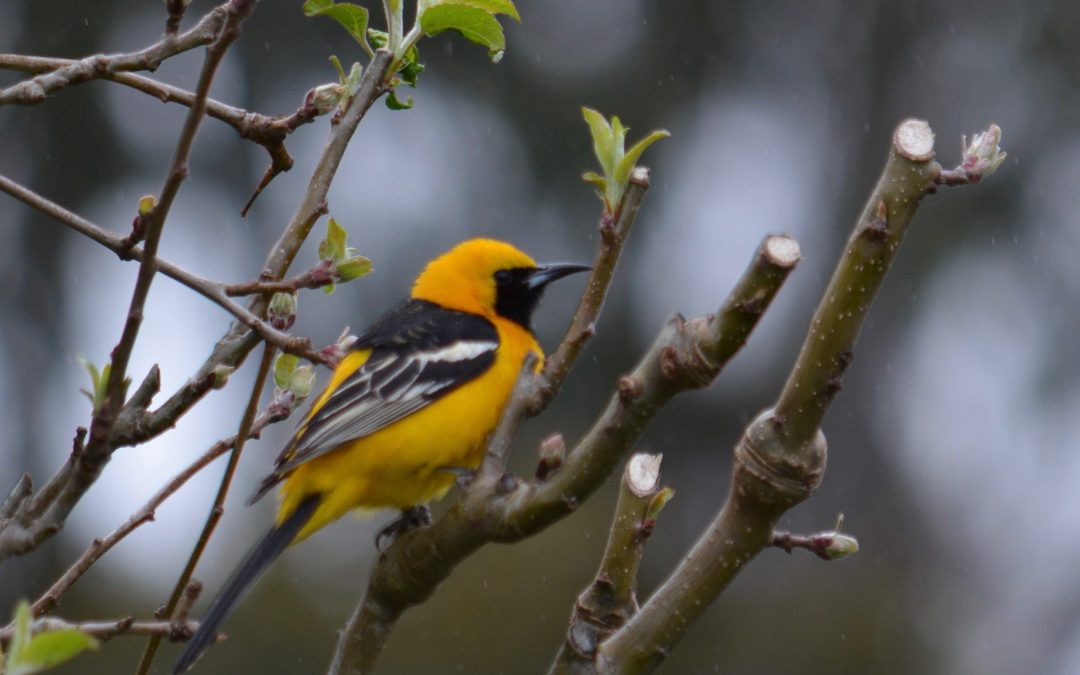It’s a subtle announcement. I mean if you’re not listening for it you’d think it was just another random chirp from one of the many birds that call our part of the world home. But this one is different. This little chirp tells me in no uncertain terms that winter is over, kaput, has bitten the dust. Spring, in all her glory, has definitely arrived.
Like a delicious orange popsicle on the most glorious sun splashed summer day, the Hooded Oriole announces its presence with a flash of brilliance across the morning sky. This is a strikingly beautiful bird. It is fairly small, 8” long with a 10” wingspan. Its electric orange body feathers are framed by black wings with white bars and a jet black mask from its eyes to its chest. When the sun hits this little bird, it practically vibrates.

The Hooded Oriole makes its appearance in our neighborhood every year within a few days of the spring equinox. There’s a tall fan palm tree in our neighbor’s yard and that’s where the oriole makes its home until the end of summer. All throughout spring and summer, I watch it make its rounds from the fan palm to the tall eucalyptus trees in the lot behind our back fence to the plum and apple trees in our backyard. On most mornings I can see my little friend perched atop one of these tall trees welcoming the first rays of sun with its lilting and lyrical song.
What makes the oriole’s presence around our home so special is that it’s a migratory species, wintering on the Baja and the Yucatan peninsulas in Mexico and coming north to breed. One of the reasons I so appreciate this bird is because of its fleeting nature. I love every time its electric orange body flashes in and out of the green foliage. Come the end of summer it’ll be gone until next spring. Seeing the Hooded Oriole every year is a rite of spring that I look forward to; it is grounding, comforting and a touchstone of normalcy and beauty in these strange and uncertain times.
Another seasonal visitor to our yard and one that arrives with even less fanfare than the Hooded Oriole is the diminutive and feisty Rufous Hummingbird. At about the same time as the oriole, this 3” long dynamo can be seen zipping between the two feeders on our deck and the tops of our fruit trees. Its rusty reddish-brown feathers and white neck stripe easily distinguishes it from our years round resident the Anna’s Hummingbird. The Rufous’ time around here is even more fleeting than the oriole’s. While the oriole stays through summer, this little hummingbird is only passing through our area on the way to its breeding grounds in The Pacific Northwest, Canada and Alaska. Its migration route of 3,900 miles is one of longest in the avian world. I’m lucky if I get to see it for a week. I go out on our deck with my Nikon and telephoto lens every day hoping to somehow capture and preserve some of it’s beauty and intrigue on film. Then one day it’s simply gone; the Rufous Hummingbird has vanished as quickly as it arrived. I feel so lucky, so incredibly blessed that this tiny bird chooses our backyard every spring as one of the way stations on its trip north.

How is it that these two species of birds manage to find their way to our backyard every year? Lifespans of up to six years have been recorded for both species but more than likely they’re not the same individuals that make the trip every year which makes their arrival even more inscrutable. In a world where no stone has been left unturned and nearly every inch of our planet has been trod upon, exploited and inhabited it’s nice to know that there are still some uncharted waters, some mysteries still left to be solved. How the Hooded Oriole and Rufous Hummingbird manage to travel such great distances and arrive at the same place at basically the same time every year is a miracle and a mystery that I hope is never solved.

Thanks for this Louie. The quarantine will make birders of all of us. I thought we just had Anna’s hummingbirds here, but I’ll have to keep my eyes open for Rufous. Mostly it’s the scrub jays and robins that hold court in our yard, and the ever present crows of course. They’re all carrying twigs to their favorite spots, and if it ever stops raining I’ll be able to sit beyond the window by the couch to watch more closely.